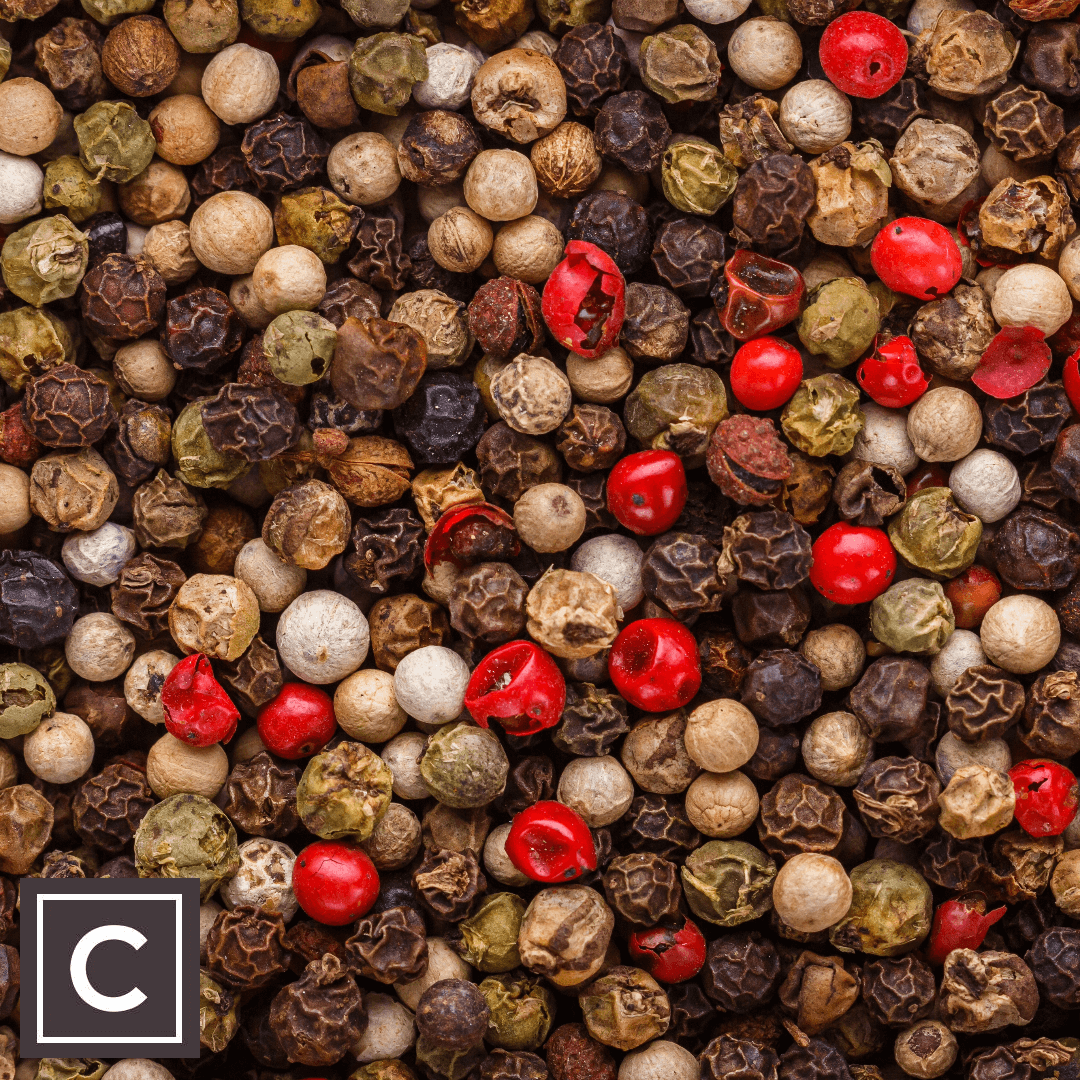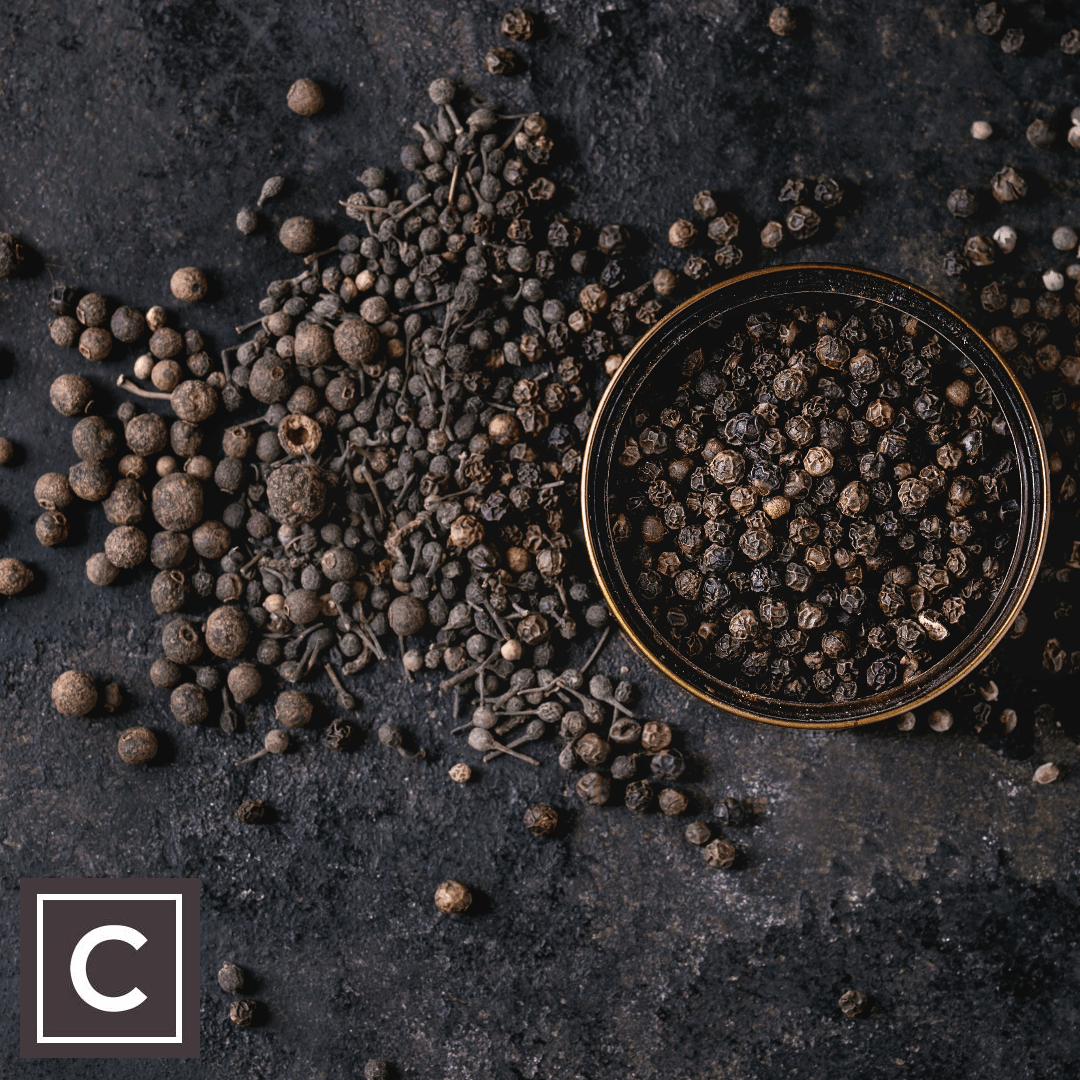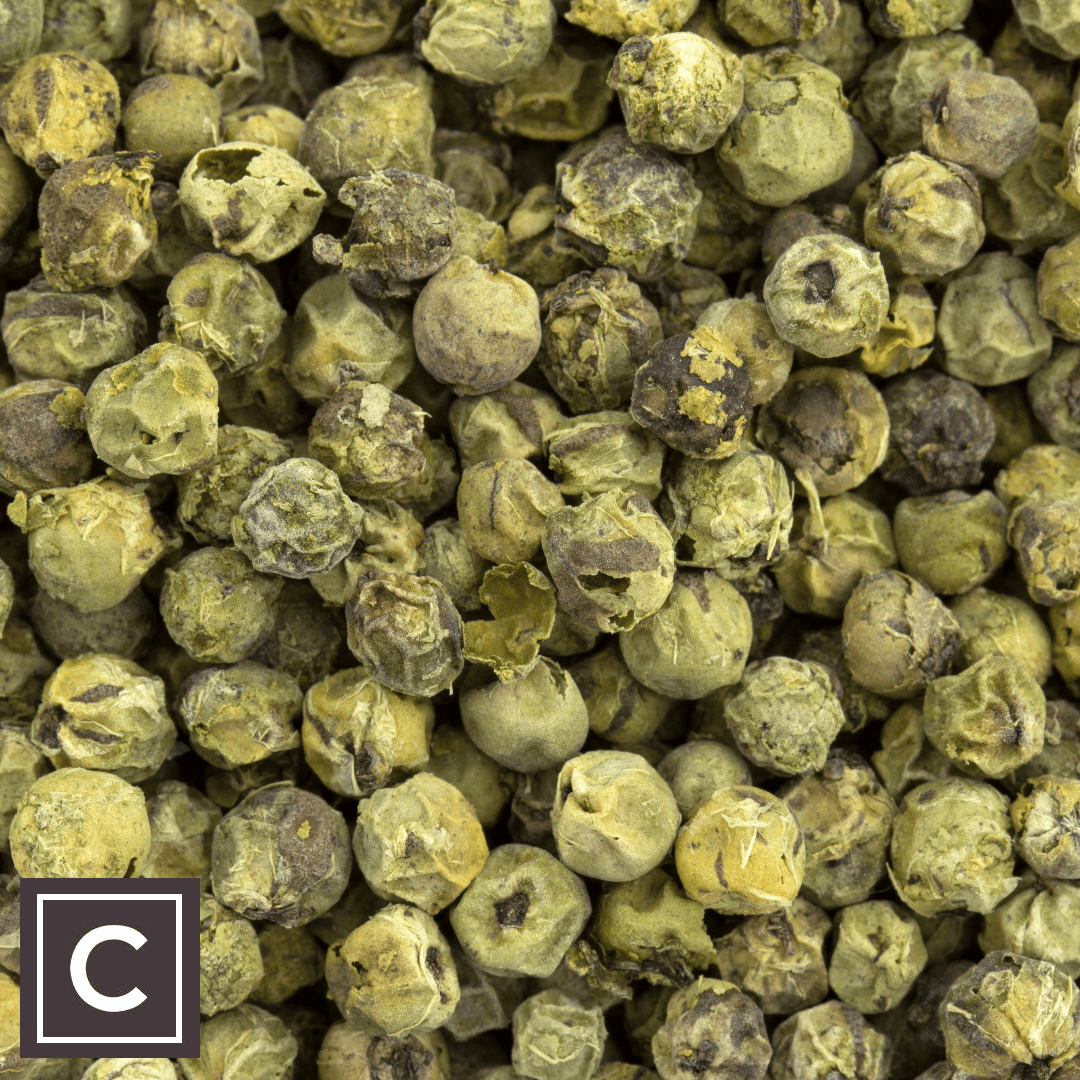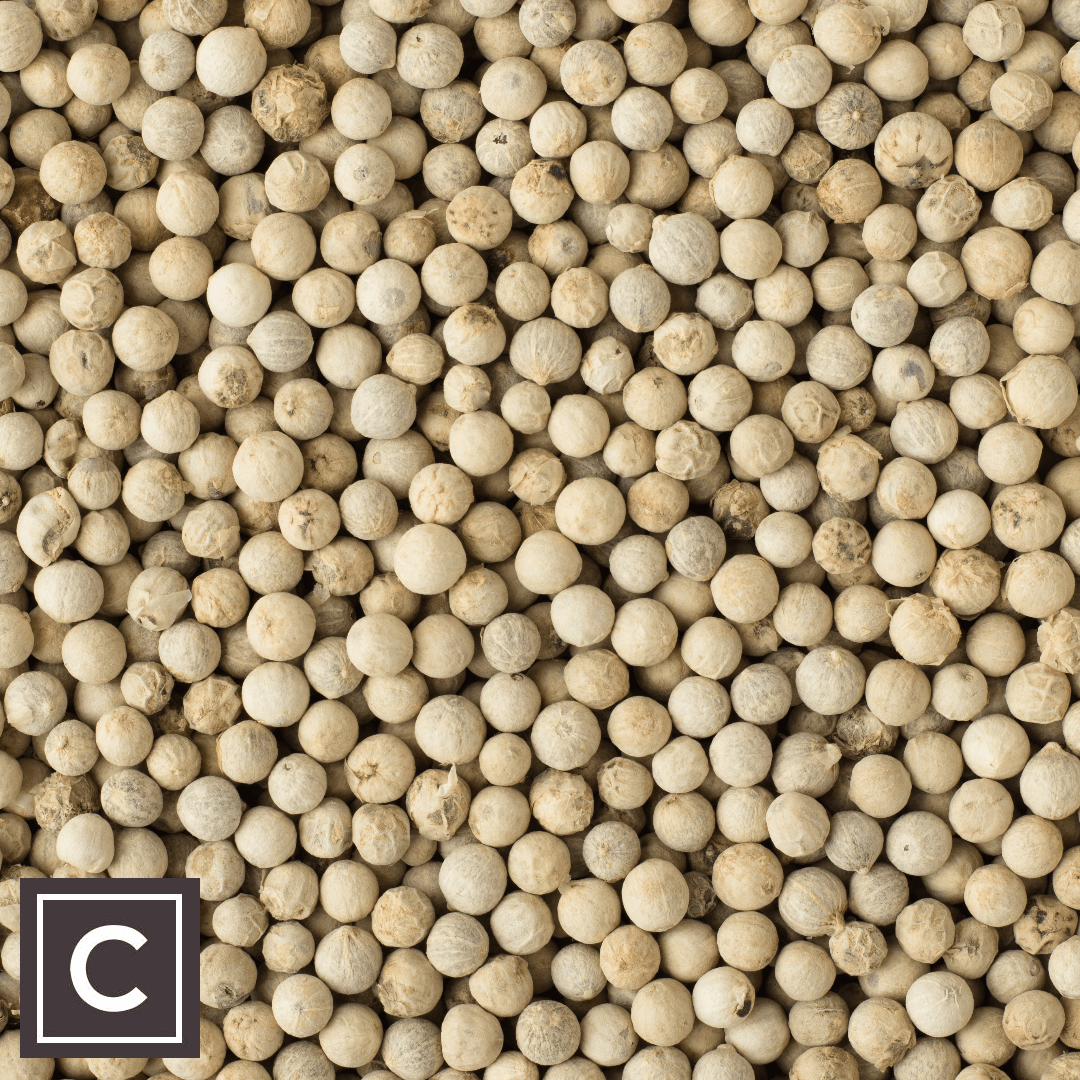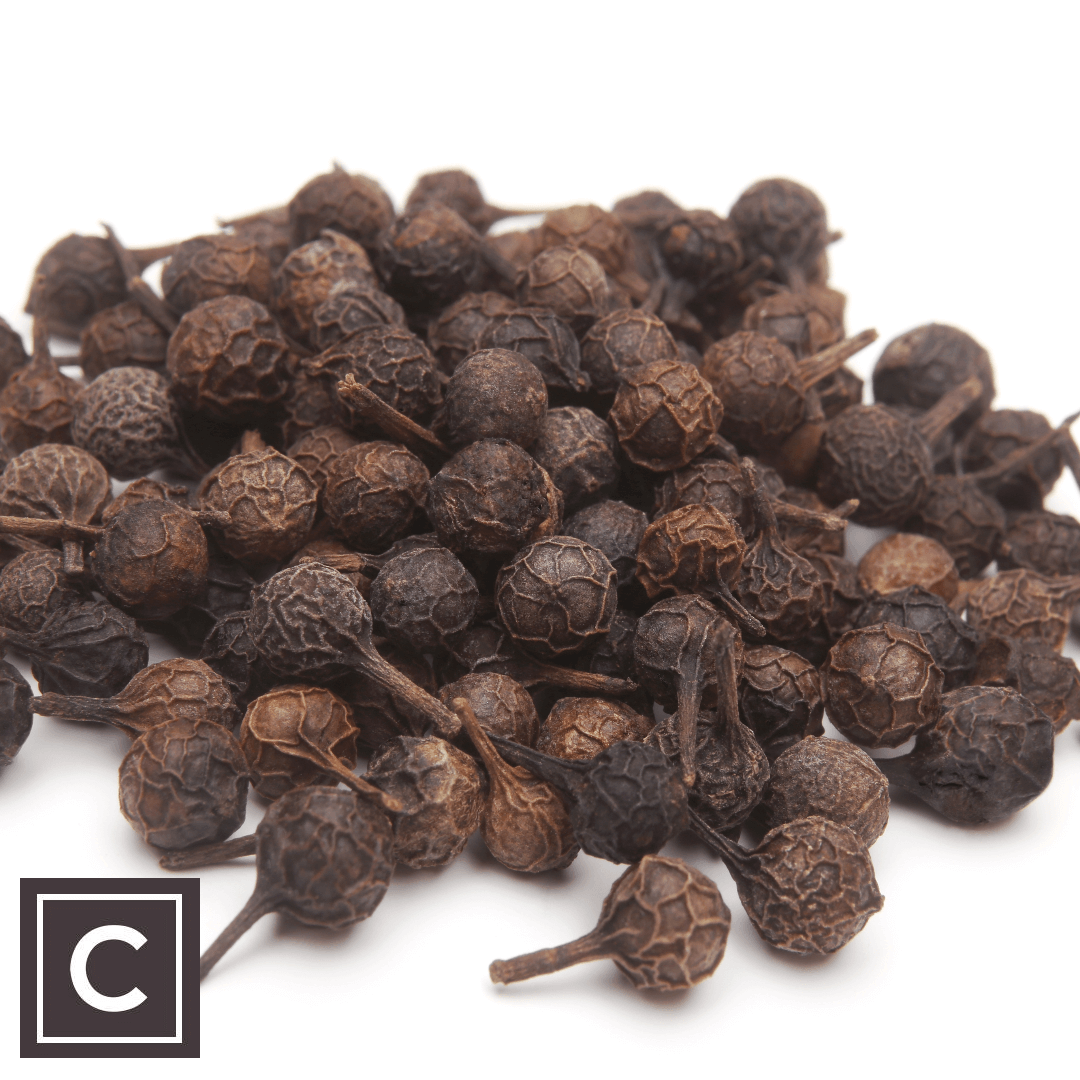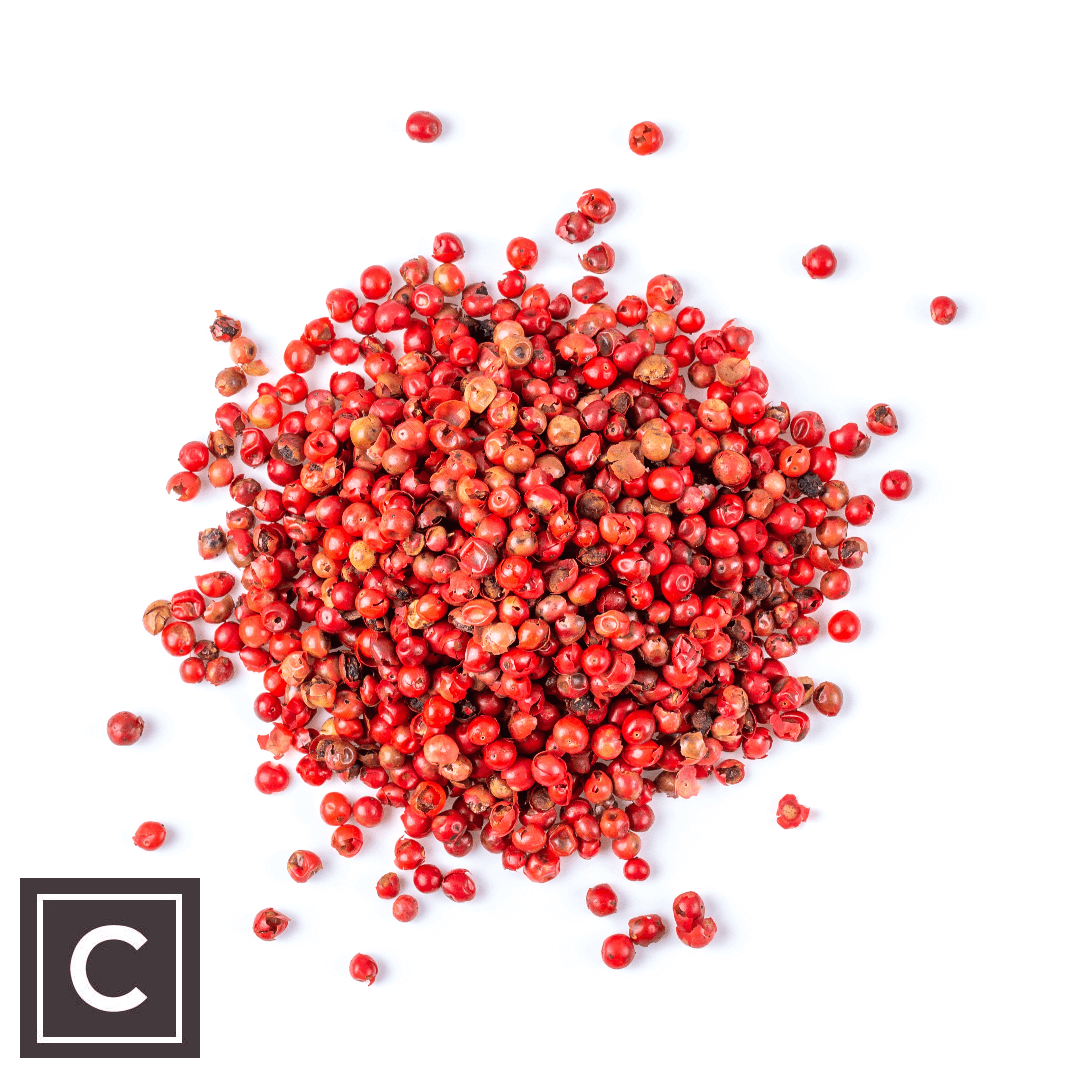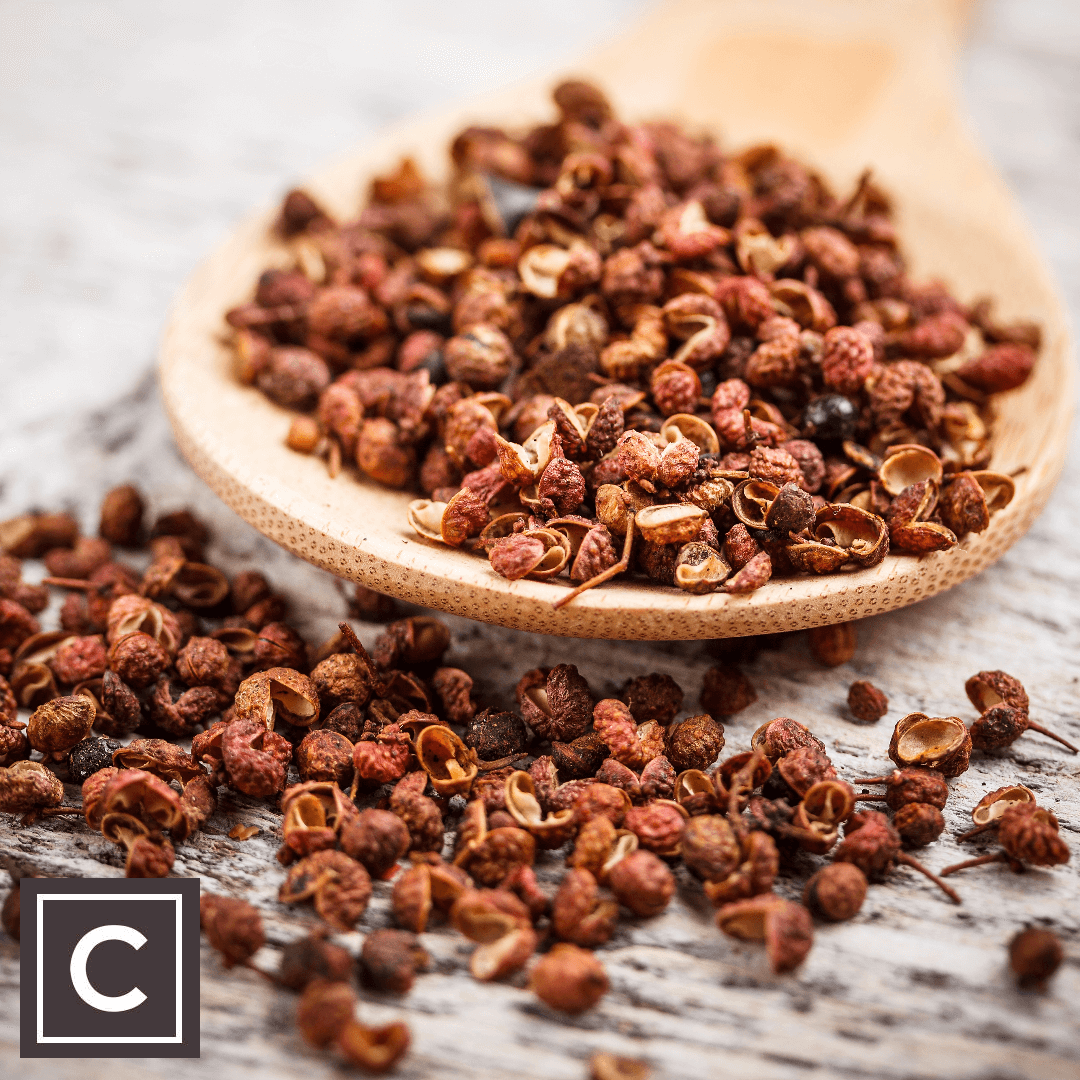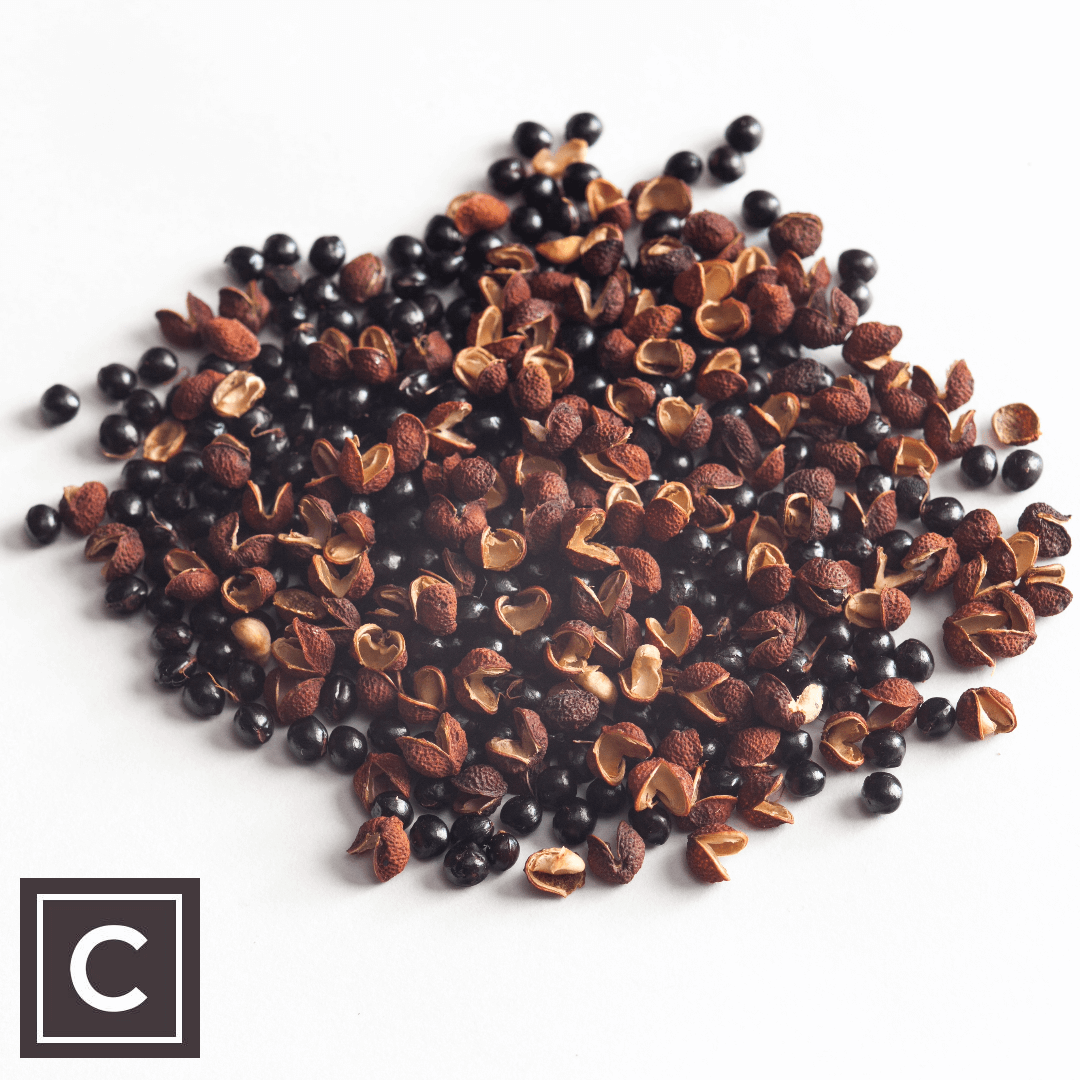A Comprehensive Guide to Pepper: The World's Most Popular Spice
Posted by Emily on 4th Sep 2023 Reading Time:
The crinkled peppercorn, though small, has held a significant role throughout culinary history. Recognised as the globe's most essential spice, its widespread appeal and impact on worldwide trade and exploration contribute to its prominence. With historical records tracing over 3,000 years, Sanskrit medical texts acknowledge its potential healing properties. By the 5th century, pepper's value was so extraordinary that it was used to settle taxes and fees instead of currency. It even served as payment for rent and dowries, and during Rome's 408 CE siege by the Visigoths, 3,000 pounds of peppercorns were included in the ransom for the city's release. At its peak, pepper's value equalled that of gold.
Pepper's popularity spanned across the ancient world and Europe's Middle Ages, cherished in India and Northern Europe, traded fervently in Venice's ports and Egypt's. While pepper's consumption was substantial in ancient times, it's even more significant today, accounting for around one-fifth of the global spice trade.
With its pungent, earthy, hot, and woody notes, pepper's unique flavour complements savoury and some sweet dishes. If salt enhances taste, black pepper elevates foods to bolder versions of themselves.
The term "pepper" encompasses a range of types and varieties, varying in colours, grades, and qualities. This label even extends to impostors that have no relation to true pepper. Nevertheless, it primarily applies to the dried fruit of Piper nigrum, a vine native to India.
In the wild, the vine entwines itself around trees, but in commercial cultivation, it's guided around sturdy supports. Small flowers yield clusters of berries, which hang from the vines as they mature and the flowers fade.
Once the initial berries transform from green to red, the entire cluster is harvested and sun-dried, transitioning from fleshy fruit to the familiar wrinkled sphere known globally.
Black Pepper
Black peppercorns emerge as green berries on the vine. Once the cluster ripens and the first berries shift from green to deep red, they are harvested and sun-dried, turning into dark brownish-black" peppercorns. Notably, these peppercorns showcase various colours, ranging from grey to brown to dark red to black. A cluster of peppercorns contains differently-sized berries, with the upper ones growing larger than those at the bottom.
Following drying, mesh screens sort peppercorns into various grades according to size. Larger peppercorns offer enhanced flavour and intensity, with the largest among them having the highest grades.
The top 10% of the pepper yield consists of Tellicherry peppercorns, which are the finest of the lot. Within this elite tier, the best are further categorised as "Tellicherry Extra Bold" or "Tellicherry Special Bold" varieties. Suppose Tellicherry represents the wagyu beef of black peppercorns. In that case, bold Tellicherry can be compared to a premium ribeye steak - it stands out as some of the world's most robust and pungent peppercorns. Their flavours are bold and vibrant, originating from their specific terroir and the growers' centuries-old mastery of production.
Other types of black peppercorns are named after the regions they're cultivated in or derive their names from historical Indian ports. Malabar black pepper, for instance, is named after India's Malabar Coast in Kerala, where it has traditionally been cultivated.
Black pepper also thrives in this region, alongside the Malabar Coast, and thus Tellicherry can be viewed as the top 10% of the Malabar harvest. "Malabar pepper" pertains to the next best option after the premium Tellicherry variety. It presents a solid choice, especially for those seeking quality pepper without the premium Tellicherry price or when a substantial quantity of pepper is required. Malabar peppercorns are smaller and exhibit a milder flavour, delivering pungency without the sharp, full-bodied taste of Tellicherry, and featuring a lighter brown hue.
However, black pepper isn't exclusively grown in India. Lampong pepper, an Indonesian variety, offers a compelling option. Although not on par with Tellicherry, it provides a bold, slightly hotter, and more aromatic flavour - not the equivalent of wagyu ribeye, but still a high-quality tenderloin.
For those searching beyond a solo steak on their plate, Sarawak pepper serves as a viable alternative. Originating from Malaysia's Sarawak state, a region renowned for white pepper, Sarawak black pepper is mild yet pleasant. It complements spice blends well, imparting a subtle note of black-pepper flavour.
While black pepper has flourished in India for millennia, New World pepper crops struggle to match the rich Indian taste. Brazilian peppercorns, while lacking in flavour, meet the demands of corporations requiring large quantities of inexpensive pepper. Thin and monotonous, Brazilian pepper's presence is often faint in pre-packaged foods.
Distinguishing between Brazilian and Tellicherry pepper is distinct, yet among superior quality peppers, such as Tellicherry, Malabar, and Lampong, telling them apart might pose a challenge. Direct comparisons offer the best insight into the variations in smell, taste, and appearance. Furthermore, assessing quality presumes the peppercorns are fresh. While pepper's flavour endures longer than numerous other spices, using freshly harvested pepper remains optimal. High-demand grades like Tellicherry typically circulate rapidly, ensuring freshness. However, it's wise to watch out for lower-quality peppercorns.
Green Pepper
Similar to other fruits, young peppercorns commence green and darken with age. Following picking, green peppercorns continue to ripen, analogous to bananas. Presently, producers dehydrate green peppercorns post-harvest to prevent transformation into black pepper. The conventional pickling method, once employed, is less common due to advancements in drying technology.
Green peppercorns lack the intricate depth of older black peppercorns. The contrast resembles that between an unripe green tomato and a ripe red one - green retains a youthful, fresh flavour, less complete than red but delectable in its own right. Green peppercorns offer a vibrant zest missing in black counterparts, infusing dishes with a fruity liveliness. Substituting green peppercorns for black pepper imparts a milder, more vibrant taste. The swap adds an intriguing twist to recipes like steak au poivre or blends harmoniously with black pepper on pork dishes. Its gentle zest aligns perfectly with fish, seafood, chicken, and delicate sauces like vinaigrettes and cream-based blends.
White Pepper
Upon close inspection, white peppercorns lack the characteristic wrinkles of black ones. This distinction arises from the fact that all white peppercorns originate as mature black peppercorns, harvested at ripeness. Instead of air-drying, these peppercorns undergo a water process or soaking, where the fruit's skin dissolves, revealing a burnished white-grey hue. Consequently, white peppercorns are smaller than their black counterparts.
White peppercorns deliver a distinct flavour compared to black ones. They lack black pepper's intricate complexity and its sharp bite, offering a floral, delicate yet pungent, fruity, and flowery spiciness with a hint of fermentation due to the soaking process. Some describe the fermented aroma as akin to a "barnyard funk."
White pepper isn't widely favoured in the United States. However, it boasts a considerable following in Europe and parts of Asia. It imparts its bite to Chinese soups such as hot and sour soup and stir-fry dishes like cashew chicken, infusing them with intricate floral notes. Across Europe, it often substitutes black pepper and is appreciated for its ability to blend seamlessly into light-coloured dishes like mashed potatoes and vichyssoise, where black specks could be unsightly.
Penja White Pepper emerges as the most intriguing within the white pepper category. This rare, pricey variety exhibits a more robust flavour profile than its counterparts, offering an intense burst of fragrance upon consumption. Originating from Cameroon, Penja earned PGI (protected geographical indication) status following counterfeiting attempts exploiting its popularity and value.
Cubeb and Long Pepper
While black, white, and green peppercorns stem from the same "true" pepper plant, two additional members reside within the Piper family: cubeb pepper and long pepper. Although these were once popular in ancient Rome, Greece, and parts of China, they now exist primarily as curiosities, accessible only through speciality spice shops. However, both make excellent additions to your spice collection, particularly for fervent black pepper enthusiasts.
Cubeb pepper, also known as Java pepper, Benin pepper, and tailed pepper, boasts a sharper, astringent flavour with a warm nutmeg-like undertone. On the other hand, long pepper contributes an intriguing, complex note, making it a suitable choice for dishes that benefit from generous pepper use, such as poultry, beef, and stews. Combining half-and-half long and regular black pepper yields a dazzling yet grounded pepper flavour, ideal for experimentation.
Other "Peppers"
Certain spices rode pepper's wave of popularity, appropriating its name. Although primarily connected to other spices possessing a similar piquant character, "pink peppercorns" adopted the label due to their similar size and shape.
Chilli Peppers
Similar motives were at play when naming the New World capsicum plant family, now widely known as chilli peppers. These fleshy fruits, ranging from mild bell peppers to fiery habaneros and beyond, originated in South and Central America. Although their roots are clear, their swift adoption by cultures worldwide has led to confusion regarding their origin. With the discovery of chilli peppers, alongside vanilla and allspice, a new chapter commenced in the spice trade. New World produce complemented spices originating from India, China, and the Maluku Islands, enriching the global spice trade. These capsicums earned the name "pepper" due to their heat. Columbus's ship's doctor labelled them "Indian peppers," recounting his crew's first taste of the pungent "wild fruits." Upon contact with their tongues, intense heat and discomfort followed, nearly driving them to madness.
Pink Pepper
Pink pepper, a member of the cashew family, features a similar size to black peppercorns. It offers a delightful combination of sweetness, brightness, and fruity depth, accompanied by a gentle heat. This variety enhances meat dishes, especially when paired with black pepper in game and poultry preparations. It also imparts mild character to dishes like eggs, chicken, and white fish. Within the realm of flavours, pink pepper makes a significant impact on chocolate and has gained prominence in ice cream.
Its vibrant colour is prized by chefs for introducing a touch of crimson to pale sauces and as a garnish. Bartenders employ it to enhance drink aesthetics, particularly pink and red beverages like the spicy Marrakesh Express. Due to its fragile exterior, pink pepper should not be used in a black pepper grinder. Instead, it's best crumbled by hand or gently ground using a mortar and pestle.
Sichuan Pepper
Sichuan pepper holds a long-standing place in Chinese cuisine. While its taste diverges from that of black pepper, its unique numbing quality mimics the heat of genuine pepper. Additionally, it boasts aromatic properties. Given its numbing spiciness, Sichuan pepper naturally complements dishes featuring potent heat, such as chile sauces, kung pao chicken, and dry-rubbed meats.
Pairing Sichuan pepper with cooling elements, like yoghurt sauces or mint salads, balances its fiery nature. This harmony of contrasts enriches dishes like Xi'an-style chicken wings and seasoned steak or lamb, enhancing their flavour profile.
Sansho Pepper
Sansho pepper, Sichuan pepper's Japanese counterpart, intensifies the tingling, numbing sensation on the tongue. Like Sichuan pepper, sansho enhances spicy seasonings, enriches rice dishes, and balances rich flavours in pork, eel, and hearty mushrooms. Its electrifying sensation finds favour as a ramen condiment, adding an extra dimension.
Grains of Paradise
Grains of paradise's name may stem from enterprising merchants who capitalised on pepper's distant, enigmatic origins. Ancient tales and European Dark Ages narratives depicted pepper and other spices flowing out of paradise in a spice river. Grains of paradise, also known as ossame and melegueta pepper, hail from West Africa. Their taste resembles a spicier version of black pepper with pronounced cardamom notes, coupled with hints of sweet ginger, cinnamon, and a touch of citrus. This diverse flavour profile renders grains of paradise a versatile spice for your collection. They can replace black pepper in various dishes, offering a more rounded, buttery rendition of the classic sharpness. Grains of paradise shine when applied to steak, burgers, roasted vegetables, or any recipe requiring a sprinkling of pepper.
In conclusion, pepper stands as a time-honoured and cherished spice that has left an indelible mark on culinary history. From its origins in ancient India to its pivotal role in global trade and exploration, pepper's influence spans continents and cultures. The diversity within the pepper family, encompassing black, white, green, and other unique varieties, showcases a spectrum of flavours and aromas that enhance an array of dishes. Pepper's journey, from its humble beginnings as a valuable commodity to its ubiquitous presence in modern cuisine, reflects its enduring appeal and importance in our culinary traditions.


